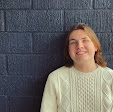WARNING: SPOILERS FOR ALL OF SHARP OBJECTS TO FOLLOW
Sharp Objects, the HBO miniseries based on the Gillian Flynn novel, concluded its eight-episode on Sunday night with a killer installment that included one heck of a twist ending: Amma (Eliza Scanlen) is the person responsible for the killings that Camille (Amy Adams) was sent back to Wind Gap to report on. This series was a lot of things; a slow-burn mystery, an intense character study, and depiction of self-harm, a showcase for terrific actors, a perfect vehicle for Jean-Marc Vallée's trademark dynamic editing style. And there is a lot I could say about it, but for now, I want to focus on how Flynn, Vallée, and Marti Noxon subvert expectations about the characters we think we know, and how easy it is to do so because of societal assumptions about women.
The set-up of Sharp Objects is close to perfect. Camille Preaker is a deeply damaged woman with problems with alcohol and a penchant for carving words into her body who must confront the demons of her past in order to report on a story in her hometown. Her mother, Adora Crellin, is a controlling and dominating figure, not only in Camille's life but in Wind Gap as a whole. Her half-sister, Amma, plays two roles, that of Wind Gap's popular it-girl, and that of helpless child Adora can care for. The two big reveals in the final episodes, that Adora has been poisoning her daughters in order to keep them constantly sick enough for her to take care of in a Munchausen by proxy situation that killed her other daughter Marian, and that Amma is Ann and Natalie's killer, are effective because they work against our knowledge of these specific characters and the roles they fill in society. Adora clearly loves Amma, why would she be slowly trying to kill her? Women are often portrayed as motherly caregivers, which is most commonly used to show if women are kind or virtuous enough for the audience's sympathies. This story flips that, making Adora's need to care for her daughters pathological, a symptom of a deeply toxic relationship. Her mental illness condemns her to fill her societally-prescribed role too well, to the point of having to artificially produce the conditions for her to do so. In her article, Camille describes this as "a very female kind of rage", which is fitting, as Flynn constructs Adora's crimes in a way that calls attention to a specific box woman are often placed into.
Throughout the series, people mention that Ann and Natalie's killer must be a man because "women don't kill that way". It's assumed a woman simply doesn't have the strength (or the desire) to pull teeth out of a person's mouth with pliers. They never even consider that a group of women (or girls) would be strong enough to carry out these crimes. (The only false note in the show for me is that Kelsey and Jodes, Amma's friends/accomplices, wouldn't even hint at feeling remorse for helping to commit such horrible crimes. Must the audience assume that they too are psychopaths?) Thus, the revelation that the killer is a fourteen-year-old girl is both surprising and a critique of the ways girls and women are viewed by society.
A common theme in Flynn's work is that women are more often thought of as victims rather than villains. Reversing that expectation is what makes Gone Girl so fun, but Sharp Objects is an arguably more nuanced attempt. Amma is a villain but also a victim. Years of being fed rat poison by Adora has likely messed with Amma's brain and caused her to be the narcissistic psychopath she is. The villain/victim split so well because Amma is already in two worlds as both the perfect daughter and the wild child. (Amma herself appropriately compares herself to Persephone in the final episode). The feminine style of killing of Adora directly leads to the more violent (meaning masculine) style of the killing of Amma. The genius of Sharp Objects is that it both subverts the supposed ideals of womanhood and debunks them completely.
Even the character names help corrupt notions of feminity. Amma, Adora, and Joya, Adora's cruel mother who is mentioned several times, are all uncommon names, which draws attention to them. By associating them with positive words and concepts (joy, adoration, amorous), it's all the more surprising when the characters are revealed to be very twisted and dark.
The depiction of Camille, the protagonist, as a flawed and complex individual is perhaps the most obvious example of Sharp Objects' intention to portray its female characters in ways more varied than practically anything else on television. Camille's actions are often unsympathetic and would be alienating if the series did not do so a good job at weaving her memories of pain and grief into her current situations. Her self-destructive tendencies make her kind of bad at her job, and even the way she tries to save her sister in episode eight is harmful to her body. But Camille would not be as nearly interesting if she weren't the way she is. That Camille is nothing like the woman a girl who grows up in Wind Gap is supposed to be and why is given as much exploration as the murder investigation, which highlights the expectations of women that have to be at the forefront of the audience's minds in order for the twists to be shocking subversions. The intricate way these stories are woven makes Sharp Objects one of the best television series in recent memory.
Thanks for reading! Have thoughts on Sharp Objects? Leave a comment below!


Comments
Post a Comment
Leave a comment!